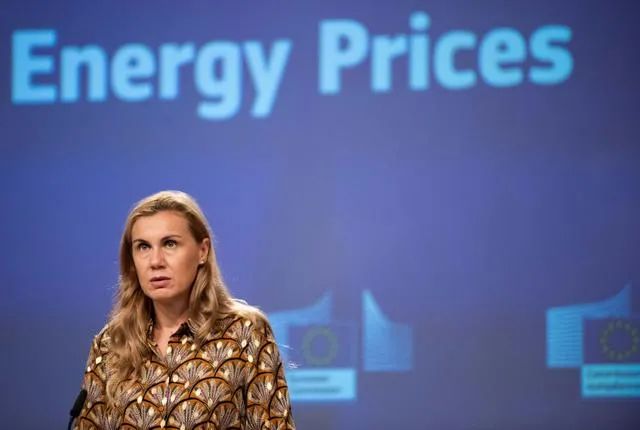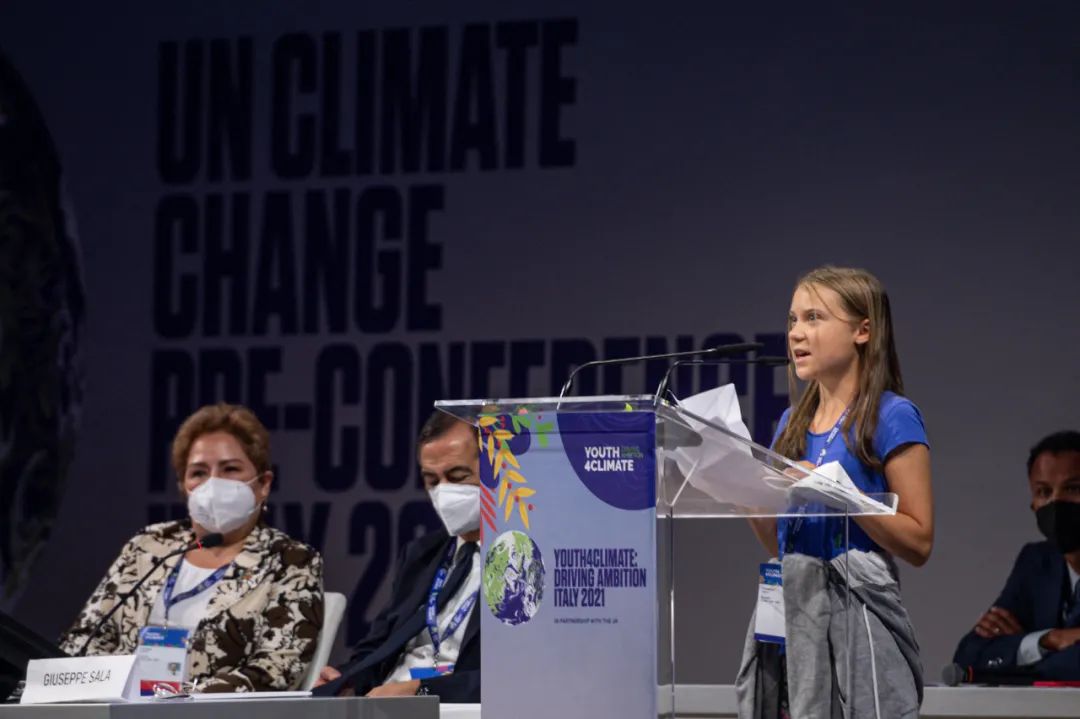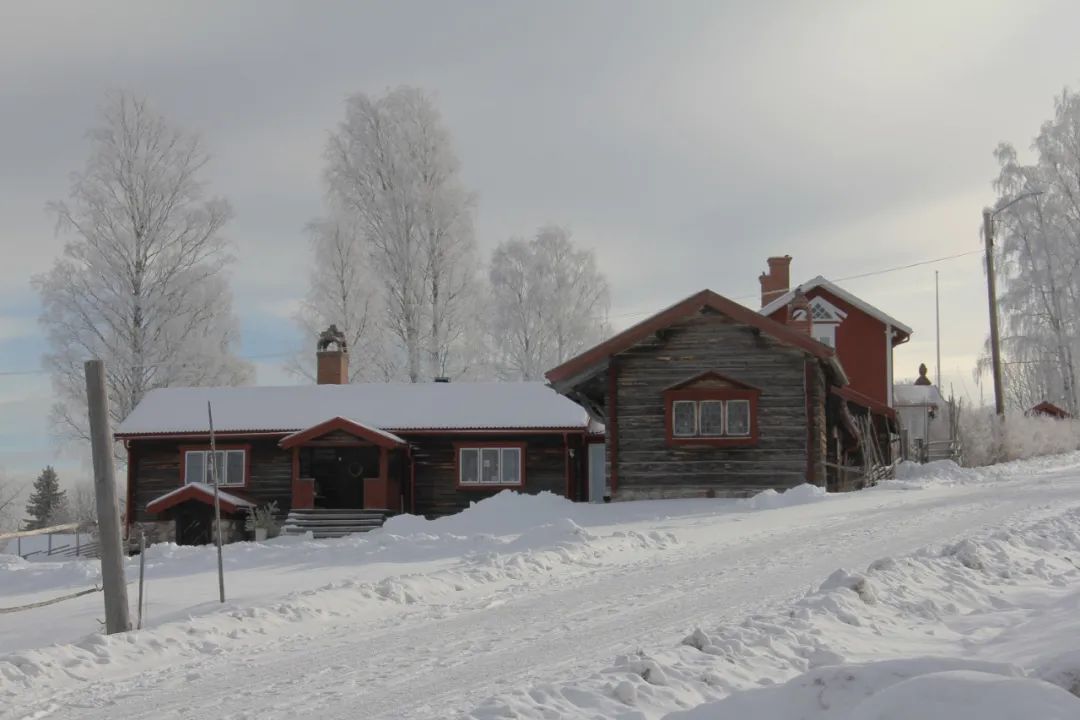Original title: Electricity prices have soared exponentially, and these Europeans have to rely on chopping wood for the winter | Beijing Brewery Hall
The persistently tense energy problem has not yet eased, and Europe has suffered from a cold winter, which has led to a substantial increase in the price of natural gas as a whole, and the price of electricity in Sweden has also increased exponentially recently.
In Sweden’s densely populated southern regions, electricity bills for an apartment have increased by nearly 300 percent on average, according to reports. People began to try various ways to reduce their electricity bills, such as turning off the heating, using alternative heat sources, wearing thick clothing and socks to keep warm, etc. Some people even paid for their electricity bills through bank loans.
To this end, the Swedish government had to urgently issue a “temporary assistance plan”, announcing that it would allocate 6 billion Swedish krona(1 Swedish Krona is about RMB 0.7)About 1.8 million families will receive compensation of SEK 2,000 to help affected families through the winter.
Sweden’s electricity supply comes mainly from domestic hydropower, nuclear power and wind, rather than relying on imported natural gas. As a result, Sweden is already less exposed to gas price volatility than many EU countries.
 ▲As early as 2019, Sweden’s wind turbine power generation has increased significantly, and its wind power production capacity and power exports have reached record highs.Photo/Screenshot of Xinhua News Agency’s audio and video report
▲As early as 2019, Sweden’s wind turbine power generation has increased significantly, and its wind power production capacity and power exports have reached record highs.Photo/Screenshot of Xinhua News Agency’s audio and video reportSoaring electricity bills, generous subsidies
In fact, since mid-December last year, electricity prices in Sweden have skyrocketed. The average daily spot price of electricity in the surrounding areas of the capital Stockholm broke the historical record of 3 crowns per kWh on December 13, and has since soared to more than 6 crowns per kWh. And so far there is no sign of a U-turn.
With its northern regions within the frigid Arctic Circle, the vast majority of Sweden’s population is concentrated in the south. Data show that in December 2021, electricity prices for detached houses in southern Sweden rose 361% year-on-year, and apartment electricity prices rose 266% year-on-year.
In fact, in recent months, the vast majority of Swedish families are “crossing the sea with the Eight Immortals and showing their magical powers”, hoping to survive the cold winter. But the problem is that if electricity prices continue to “freely fly”, many families will not be able to stand it. Local media said that many households have already paid their electricity bills through credit card overdrafts and even bank loans.
As an established welfare state, the Swedish government naturally has to help.
In December 2021, Swedish Finance Minister Dan Berg promised that the government “will be committed to helping as many people as possible and take the necessary measures to give people more breathing space”. In January 2022, Energy Minister Farman Barr also said that concerns about the deterioration of the financial situation due to skyrocketing electricity prices were “fully understood”.
On January 12, the Swedish government announced that it would allocate about 6 billion kronor for a temporary program to help Swedish households most affected by rising electricity prices to cope with the crisis. The specific measure is that for the three months from December 2021 to February 2022, households that consume more than 2,000 kWh of electricity per month can receive an electricity price subsidy of about 2,000 kroner per month.
“This is an exceptional measure in a special case, and it is exceptional for Sweden to provide support when market factors cause price volatility,” said Danberg, who expects about 1.8 million households to benefit.
 ▲On October 13, 2021 local time, European Commissioner Kadri Simson, responsible for energy affairs, held a press conference on energy prices in Brussels, Belgium. With the advent of the cold winter in the northern hemisphere, the energy problems plaguing Europe are also intensifying, and the skyrocketing electricity price problem encountered by Sweden is only one of them.Photo/Xinhua News Agency
▲On October 13, 2021 local time, European Commissioner Kadri Simson, responsible for energy affairs, held a press conference on energy prices in Brussels, Belgium. With the advent of the cold winter in the northern hemisphere, the energy problems plaguing Europe are also intensifying, and the skyrocketing electricity price problem encountered by Sweden is only one of them.Photo/Xinhua News AgencyIt’s not the market, there were rhetoric
However, is the soaring electricity price in Sweden and the whole Scandinavia really just “market trouble”?
Although Sweden lacks traditional fossil energy deposits such as oil, natural gas and coal, it is one of the European countries with the most abundant hydropower resources. However, because its hydropower resources are concentrated in the north, where the climate is harsh and sparsely populated, and because of the long and narrow terrain and multiple fjords, the north-south power transmission system has long been a serious bottleneck.
To this end, after World War II, Sweden once vigorously developed nuclear power. Nuclear power without geographical restrictions can be deployed nearby in the southwest where densely populated, industrial and large cities are concentrated, which greatly relieves Sweden’s energy pressure.
However, since the 1990s, radical environmentalists have gradually dominated the discourse of Swedish public opinion. Under their fierce advocacy, fossil energy has been completely included in the “death penalty list”, and nuclear power and even hydropower are not worthy of being regarded as a “death penalty”. Green Energy”.
Under the impact of this “environmental protection” trend, the total installed capacity of coal power in Sweden has not exceeded 1 GW since 2000. Data show that in 2020, Sweden will only have 3.2 GW of thermal power installed capacity, including coal-fired, oil-fired and gas-fired. The Swedish government is complying with the demands of radical environmentalists and plans to reduce the proportion of coal-fired power to 0 in 2030 and the proportion of all thermal power to 0.5%, or no more than 1.8 GW.
The “green energy plan” formulated by the Swedish Social Democratic Party government can be described as ambitious: from 2020 to 2030, the compound annual growth rate of the proportion of “pure renewable energy” such as wind energy will be stabilized at more than 7.4%; Renewable energy” accounted for 41.3%. To this end, the country’s government reduced its strategic reserves of natural gas and “randomly” permanently shut down nuclear power plants within its borders.
Of course, Sweden has the courage to make such a rhetoric.
In early December last year, an analysis by a consultancy commissioned by five major wind energy companies in Sweden said Sweden’s electricity demand would rise from the current 140 terawatt-hours to 370 terawatt-hours in 2050. Still, Sweden can provide 167 terawatt-hours of electricity per year from offshore wind alone, and 130 terawatt-hours from the “green hydrogen system”.
At the same time, more than 130 wind energy companies across Sweden are “planning to build offshore wind projects of more than 500 TWh/year”. In other words, by then, offshore wind alone will be able to meet 45% of Sweden’s annual electricity needs, plus other “pure renewable energy” such as “green hydrogen”, as electricity analysts say, Sweden “will achieve energy by 2040. 100% pure renewables won’t be too much of a challenge.”
However, as the so-called “ideal is full, reality is very skinny”.
The operator of Sweden’s state-run electricity transmission system pointed out that the complete shutdown of nuclear power plants and the drastic reduction of thermal power have created a huge power supply gap in the south and southwest of Sweden, the most densely populated and industrialized and most concentrated in electricity consumption. This also makes the north-south power transmission system, which was originally “inherently deficient”, even more strained, and the additional infrastructure construction is not urgent and is not destined to progress rapidly under Sweden’s special geographical conditions. Coupled with the lack of wind power this winter, wind power generation is much lower than the annual standard, and the price of natural gas in Europe has been artificially inflated. A series of factors are interrelated and compounded, forming a catastrophic vicious circle.
It can be said that the current surge in electricity prices is precisely because the Swedish government and the opposition are immersed in the pride of “the world‘s leading green concept”, relying on the opinions of related interest groups to formulate corresponding energy policies, but deliberately ignore the many immature or “seeing” of new energy. The “day to eat” factor ignores the results of the global energy pattern and the impact of the environment.
 ▲On September 28, 2021 local time, Swedish youth activist, political activist and activist Greta Thunberg speaks during the World Youth Climate Action in Milan, Italy. Represented by it, Sweden’s radical trend of environmental protection can be said to have deep roots. Figure/Ic photo
▲On September 28, 2021 local time, Swedish youth activist, political activist and activist Greta Thunberg speaks during the World Youth Climate Action in Milan, Italy. Represented by it, Sweden’s radical trend of environmental protection can be said to have deep roots. Figure/Ic photo“Green” is unshakable, politics must be “correct”
Nevertheless, Sweden’s “green correctness” has reached the point of “unshakable” or even “unquestionable”.
Faced with the public’s complaints that “this subsidy is not enough”, Lundgren, the deputy chief economist of the Swedish energy market regulator, had to “flash and move” to give the suggestion that “everyone should buy more and more intelligent energy-saving products” . According to the evaluation of some Swedish netizens, “it seems that these new products don’t cost money”.
For those “retro” to the use of wood chopping and fireplace heating, the most worrying thing is that chopping wood has become less and less.
Not only that, some residents have asked, “Is tree cutting more conducive to reducing emissions than nuclear power?” Of course, neither Swedish government agencies nor environmental groups will directly answer this question.
What is real help? Facing the surging tide of electricity price hikes, is it scrambling to provide a drop in electricity subsidies, or to fundamentally solve the contradiction between supply and demand of power generation, transmission, and power supply, and provide enough and stable electricity for the people?
However, the Swedish government apparently prefers the former, which has dubious effects on “political insurance”, rather than the latter.
Because, as a constitutional monarchy, if the Swedish government wants to maintain the right to form a cabinet, it must obtain the majority support in the 349-seat parliament. For the SPD, which has less than half of its seats, this means that it cannot take risks lightly, especially not to offend radical environmentalists with deep roots.
After all, radical environmentalists who identify themselves on the left are more likely to be supporters of the SPD than on the right. Therefore, in the face of the frenzy of rising electricity prices and subsidized by a drop in the bucket, Sweden can only continue to “cross the sea and show their magical powers” to survive the cold winter.
Beijing News Special Writer | Tao Shortfang (Columnist)
.
